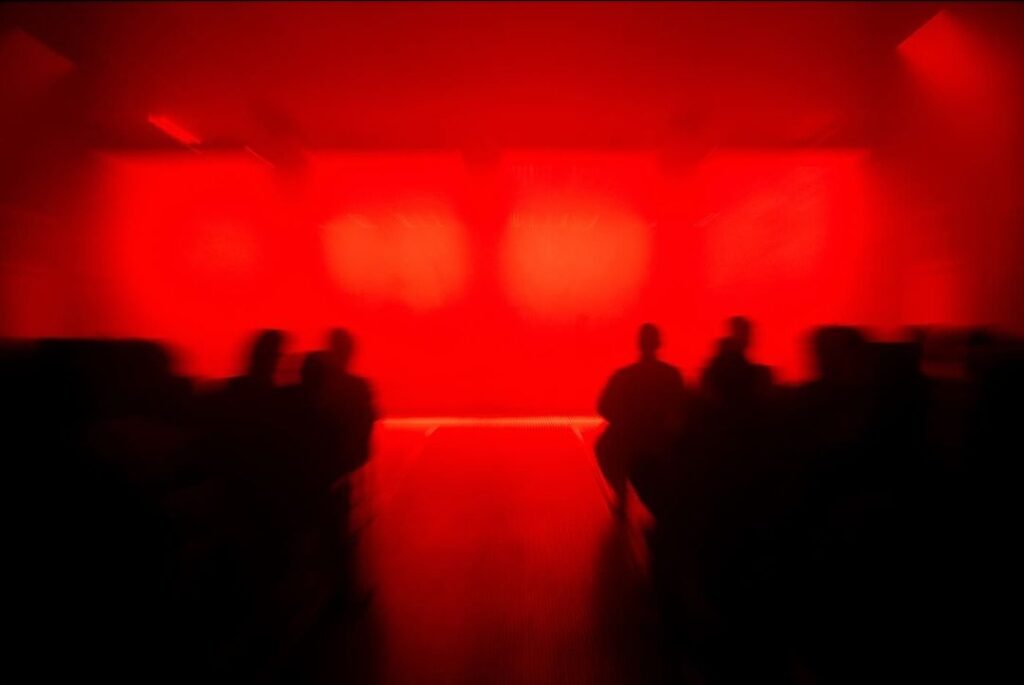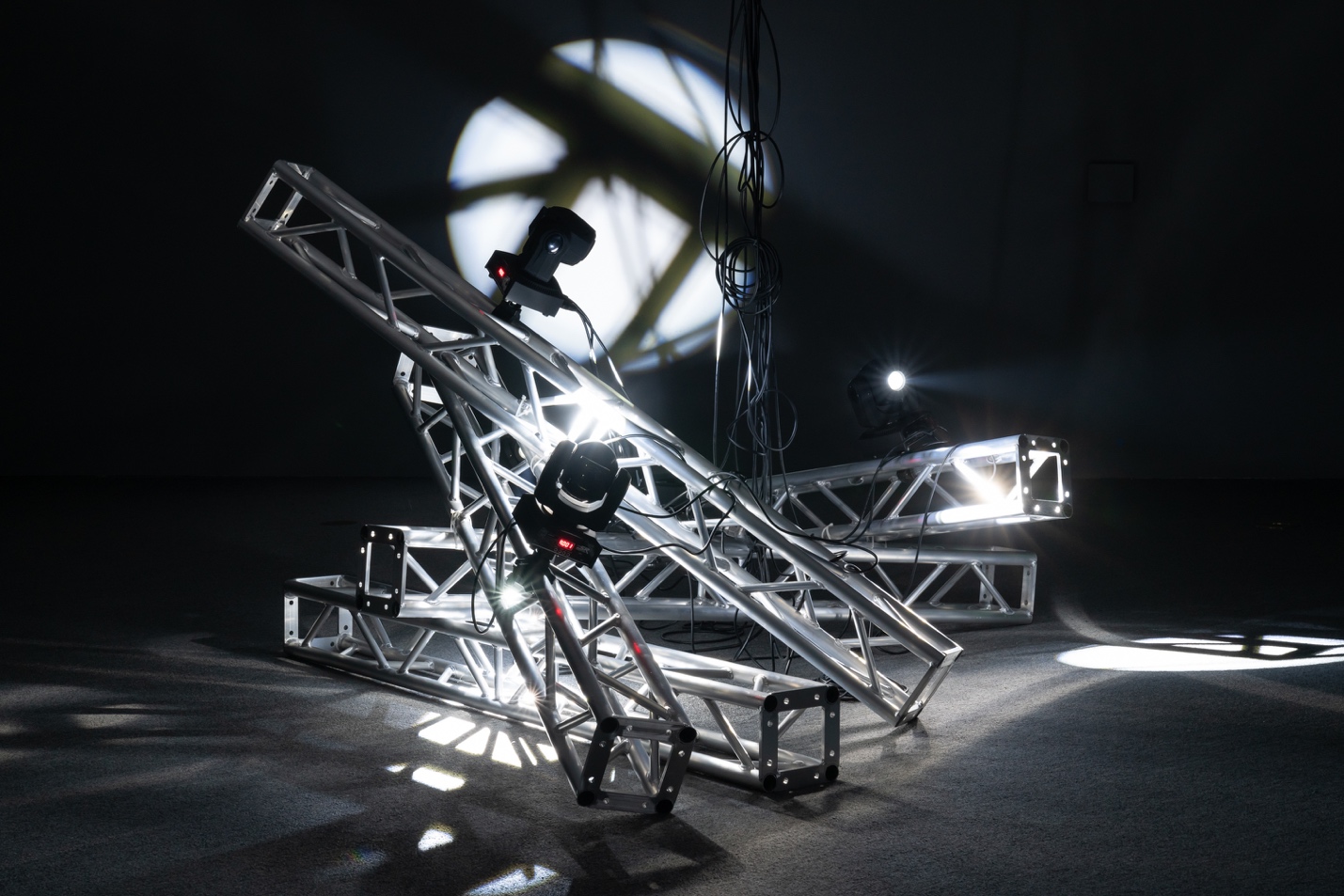Nikita Gale Loosens Attitudes Around Sound With Her Performa 2023 Commission


Nikita Gale is on a tear. We talked over Zoom video conference in early October, we caught up before she left for the studio to do some arranging for Gale’s commissioned work at Performa Biennial 2023, titled OTHER SEASONS. In a way, our interview mirrors the fragmented nature of the piece itself, taking place before I could see the work. Fittingly we discussed audiences finding themselves in the work, which I eventually did, and of course, the weather.
Since our conversation Performa has begun and OTHER SEASONS has both premiered and run its course. Deconstructing Antonio Vivaldi’s The Four Seasons to consider the arbitrariness of the season as a unit of measure, the work implodes narrativity, refusing the representational. It was an invitation to be present and still with others—even amidst the haze of fog; the sway and boom of live and recorded popular music, the over-exposure to and flash of light, and other atmospheric conditions that reverberated through the venue in Long Island City over the two-day run. Although attendees struggled with intermittent moments of stillness (turning over their shoulders in anticipation for a gimmick) the performance succeeds in defamiliarizing our sonic and visual orientations toward the idea of the stage. For example, Gale’s choreographing of rainbow-colored lights on trusses to The Weather Girls’ “It’s Raining Men,” reflects and refracts universal queer cultures’ erasure of black women’s labor.
By the end of the performance, we were left with the weight of our own impressions and presumptions.

BP: For your commissioned work at Performa, titled OTHER SEASONS, you are collaborating with the Harlem-based ensemble, The Unsung Collective to reimagine Antonio Vivaldi’s The Four Seasons. I wonder if the concertos’ accessibility is part of the reason why you chose the score?
NG: I have been doing research on and conceptualizing around weather for years now. The piece itself, OTHER SEASONS, comes out of my interest in The Four Seasons being hilariously ubiquitous. It’s everywhere, everyone knows it. I think of it as proto-pop music because it is Baroque; over the top in every possible way. I was curious about formal dynamics around closeness and proximity. But also, the attempt at representing weather, which is constantly changing and so dynamic.
In OTHER SEASONS there are four chapters. Each starts with a high level of fidelity, and then starts to break down, becoming rearranged over time. It slips into this highly mediated, lighted, video soundscape. You are constantly on this roller coaster throughout the piece. The ensemble, The Unsung Collective, is primarily black American string players. They recently re-performed the work in its entirety.
Brittnay Proctor: What keeps you grounded and inspired to do this work?
Nikita Gale: I feel like as an artist working in the conceptual field, going through the art school pipeline—albeit I waited a really long time to do that—I was constantly fighting against my intuition—or tapping into anything related to something beyond the material, whether that be spiritual or intuitive. There is a spaciousness that comes with being more connected to that thing that isn’t quite tangible.
BP: This word is taboo: “hustle,” but we use hustle to describe our labor. Do you find yourself hustling?
NG: That is a funny word. There is a whole movement that is anti-hustle. “Black power naps,” “rest as resistance,” which I deeply believe in. Hustle is something I associate with speed: there’s a kinship there. It’s deeply rooted in capitalism; the attitude around capital of consuming everything as quickly as possible and absorbing it into the spectacle.
It is something I constantly try to remain aware of. For works like DRRRUMMERRRRRR (currently on view at Miller ICA in Pittsburgh), or PRIVATE DANCER (currently on view at ICA Philadelphia), there are installation instructions, and the work gets distributed to other people. When I think about these works, it is me trying to hustle the hustle mentality. How can I fuck with it and make less of it fall entirely on me? Hustle and scarcity culture are the myths that permeate all industries, especially an industry like the art industry. Not always, but there are the big shiny parts of it that are entirely driven by capitalism.

BP: Your work uses various materials in its composition: sound, concrete, metal, light, and water. How much are the materials you use a matter of coincidence versus a dialogic practice?
NG: I spent several years experimenting with materials. My relationship to concrete, for example, has been many years in the making. I have really funny stories of my gallerist in L.A., Young Chung at Commonwealth and Council, de-installing early concrete work and getting blasted in the face with concrete dust because I was using real construction concrete, not the concrete I use now, which is polymer-based. But a lot of it is trial and error; making notes on what did not work, finding a professional, getting them on the phone, and asking a million questions.
I try to use the material language of the thing I’m talking about. With concrete, my interest is in structures, infrastructure, and the design of spaces. I think of it as a poetic way of working: having the material or the language but using it in a way that is not necessarily narrative.
BP: That makes me think about PRIVATE DANCER. The piece feels like an indictment of the idea that form is objective. I felt floored by how you use over-exposure via the sculpture’s animated lighting system. It seemed like you were illuminating Turner’s vulnerability to both the ills of fame and consumption. Not to be too didactic, but can you say more about your approach to this piece?
NG: When I first made this piece, I was working with Cameron Shaw at the California African American Museum (CAAM). When I’m working through ideas it requires a curator who’s almost at the level of a collaborator. I owe it to Cameron for helping bring this work to life because CAAM is also my first museum solo show. It was meant to open March 2020.
BP: I’m so sorry.
NG: I was thinking a lot about what it means to gather in space. With PRIVATE DANCER, I was thinking about the labor of pop music performance—these spectacle-based performances—everyone is working, but what you’re seeing is such an aestheticized form of labor that it stops feeling like you’re watching work. I was curious about the ways performance, vision, and the work of being visible and legible and the exchange that happens there.
I always have to go to the most basic layer. For example, when I was doing work about protest culture, I asked, what is everything standing on? I had to start at the street; at the material of the street; asphalt, concrete. PRIVATE DANCER asks, what is the structure that is holding this relationship? It’s the arena, it is the stage; it is the trusses, the lights. I wanted a ruin of stage lights to be what you focus on.
I started thinking more about ruin during the pandemic and protest mantras of destroying institutions or dismantling institutions. These questions came up for me: What happens to those institutions once they’re destroyed? What happens to the material, whether that’s physical material and buildings, or the way that institutions persist psychologically? Do we build on top of those? Do we move the material? Does it change shape?
If I’m talking about dismantling this institution or unpacking the concept of performance in a certain format, I need to deal with the materials. What happens when a pile of something becomes something else? It’s quite beautiful, but also jarring. It has to be both.

BP: What role does the idea of the collective or community play in your art practice?
NG: I was thinking about this in a work that I made in the beginning of 2020 called AUDIENCING at MoMa PS1. It started with the idea of listening. But then it started to feel ableist of me to focus so much on that particular sensory ability. “Attention” became an operative word for me. In terms of the relationship to “the group,” or audience, I was curious about how fifty people could experience the same event, but there are fifty different experiences simultaneously happening. It’s quantum.
With visual art galleries and exhibitions, there is also the idea of the audience being a dispersed mass that accumulates over time. It is very different with Performa because it is a work that requires a specific duration of time for people to be in a room together. That is exciting and very scary for me. [laughs]
BP: Is some of how you’re feeling related to this notion of the representational?
NG: This is a hole I always dig for myself, which is to work with a subject that is often very familiar and easy to identify, like, cars, guitars, pop music, Vivaldi—classical music—very familiar genres of performance. They have so much baggage and history attached to them, that it is a great challenge to create an environment where people are encouraged to loosen some of the attitudes or narratives they have personally attached to these things. Sometimes it works. Sometimes it does not.
This is my Tina Turner obsession. It is watching her career and the way that people would write about her because they did not have the language. They have to resort to approximation. How her work was perceived feels really close to my heart. Not just on an artistic level, but on a personal level. I feel like the language or the audiences have not yet assembled themselves, or they are in the process of doing so. I have to shout out Lorraine O’Grady for that. She has this essay titled “Performance Statement #3,” [Thinking Out Loud: About Performance Art and My Place in It, 1983], where she talks about why she documents obsessively and it is because she does not feel like her audience has found itself yet; this for when they do.
BP: I will be part of your audience. Hopefully, I will have arrived. [laughs]
NG: [laughs] I just need one of you.
Performa 2023 runs through November 19 see the schedule here.
You Might Also Like
What's Your Reaction?
Brittnay L. Proctor is a researcher and writer of performance, popular culture, and sound/visual culture at the nexus of blackness, gender, and sexuality. She is Assistant Professor of Race and Media in the School of Media Studies at The New School (NY, NY) and the author of Minnie Riperton’s Come to My Garden (Bloomsbury Press: 33 1/3 Series). She is currently working on two book projects; one of which soundtrack’s black Southern migration to California during the Second Great Migration and the other, which draws on LP records and Compact Disc’s (CD’s), to trace the sonic and visual discourses of gender and sexuality in funk music.

